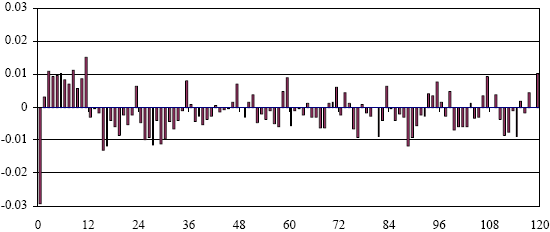Do stocks have annual rhythms beyond the January effect? In their March 2007 paper entitled “Common Patterns of Predictability in the Cross-Section of International Stock Returns”, Steven Heston and Ronnie Sadka investigate cyclic patterns of return predictability for stocks in Canada, Japan and twelve European countries (chosen based on the number of firms available for analysis). Using monthly returns over the period January 1985 through June 2006 (258 months), they conclude that:
- Stocks that outperform the local market in a given month tend to outperform in the same calendar month for many years, while underperforming in most other months. Zero-cost portfolios that are long/short the tenths of stocks with highest/lowest past monthly returns 12 months ago, rebalanced monthly, earn an average of 0.52% per month in years two through ten. By contrast, a similar strategy using past returns across an entire year earns -1.3% per month over the same period.
- While results are most pronounced for a January cycle, the 12-month return effect holds for most calendar months.
- This pattern is independent of firm size, stock beta, currency and country effects.
The following chart, taken from the paper, shows how average stock returns for a given month relate to stock returns for past months 1-120 (ten years). Except for the most recent month, the relationships are positive for all lags up to one year, indicating an international momentum effect. Beyond one year back, there is a reasonably consistent pattern of positive relationships at 12-month intervals with return reversals in between.

In summary, there is a tendency for stocks worldwide to reprise their monthly return behavior every 12 months, with intracycle reversals, over periods of many years. Results suggest calendar-connected market structures.